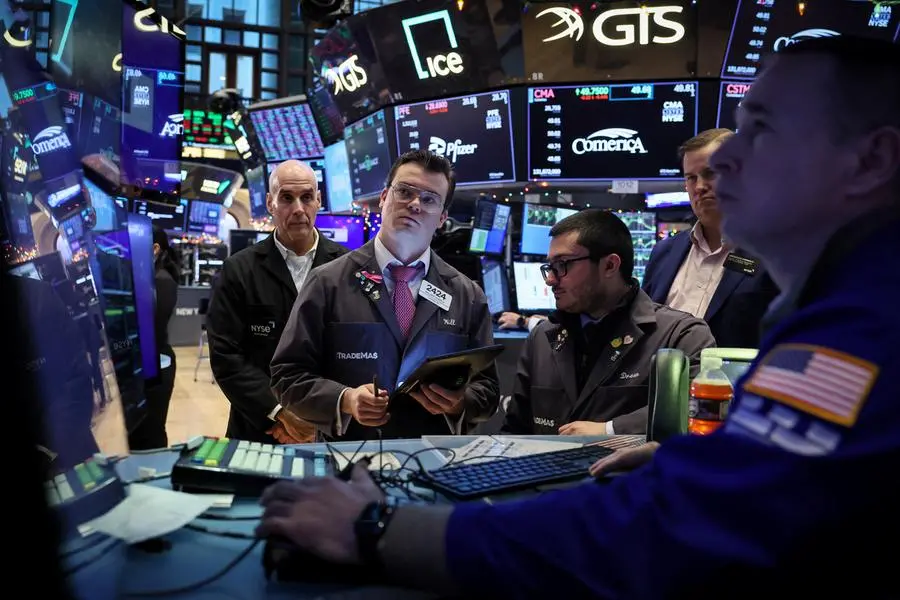PHOTO
LONDON - The China conundrum aside, a search for undervalued assets already seems to be tempting some investors back to emerging markets - but Western savers happily hunkered down at home may struggle to accept the case.
In the slipstream of the global rate cut euphoria late last year, foreigners plowed a net $29 billion into emerging market debt and equity portfolios in December - taking the 2023 inflow near $179 billion, according to numbers published by the Institute of International Finance this week.
That looks like quite a whoosh given that China, typically the emerging elephant in the room, saw funds flee for a second straight year to the tune of more than $80 billion - and on top of a $105 billion exit in 2022.
But as the IIF points out, 'exChina' stock inflows remain relatively modest and overseas cash heading for local currency debt in the likes of Brazil, Indonesia or South Africa still "lags significantly" behind its pre-pandemic pace.
Could 2024 mark a new dawn after years in the wilderness?
The big issue seems to be whether emerging returns are enough to drag U.S. and western funds from an increasingly comfortable 'home bias' - pampered as they now are by high domestic fixed income rates and put off by seismic geopolitical risks in a year laced with key elections and military tensions.
The relentless underperformance of China's stock market and that of wider emerging equity indexes against global benchmarks last year doesn't paint a pretty picture - even if hopes of 'mean reversion' and value plays have many looking at that universe once again.
Pendulum plays may make sense if it had been one-off duff year. But MSCI's emerging market stock index is still basically where it was 10 years ago and has underperformed the MSCI's all-country index by more than 40% over that period.
Emerging debt markets have been a better bet - but there's questions there about whether they now offer enough for western savers.
'WHY BOTHER?'
In a report this week on top strategic investment themes for this year and beyond, JPMorgan analysts opined on the likely continued dominance and outperformance of U.S. investments and 'higher for longer' U.S. interest rates.
"Higher for longer is harder for longer for emerging market assets as resilience doesn't necessarily translate into portfolio flows," they said. "Single-digit upside for EM fixed income and equities begs the question: why bother investing in EM when one can get 5%-plus in U.S. fixed income?"
Even though the world economy at large has proven resilient, they point out that portfolio flows to emerging markets have experienced the most pronounced decline in more than a decade - driven mainly by outflows from Russia and China - and they have now been trending down for ten years.
De-globalization perhaps - as finance dovetails with re-shoring and re-industrialisation of western economies - has seen U.S. investment turn back inwards to seek 'emerging markets' domestically in tech or clean energy and other sectors. A similar pattern was seen in the late 1990s after serial emerging market crises - a retreat that arguably fueled the dot.com bubble.
Either way, cumulative portfolio flows to emerging markets since 2021 of $200 billion are less than a third of what they were during the 'Taper Tantrum' of Federal Reserve tightening in 2013, and assets benchmarked to JPMorgan emerging indexes have dropped by 10% since early 2022 - with those mapped to local currency indexes flatlining since 2018.
Some return to EM bond funds may at hand this year, JPM's team reckons.
But with the gap between developed and emerging interest rates at multi-decade lows, attracting back capital will be tricky - even if less dependency on such flows over time is arguably a positive.
The EM Asia rate differential is actually negative for the first time in more than two decades, the U.S. bank points out, and a 100 basis point pick up on the yield on JPM's local currency debt index over U.S. cash and high grade bonds 'is not that attractive'.
Even junk rated EM credits and frontier market yields at 11-13% are only comparable to yields on U.S. private credit.
"These headwinds could persist as rate differentials will narrow further when EM easing cycles proceed and before the Fed starts its own," they said.
"GENERATIONALLY ATTRACTIVE"
Not everyone is so downbeat, as some see long-term currency shifts as the catalyst.
GMO portfolio manager Victoria Courmes says local emerging market debt markets offer "a generationally attractive entry point" and the best set of factors in 20 years - hinged largely on the view that an historically expensive dollar is now at the top of what's proven to be decade-long swings.
Even though developed-emerging economic growth gaps are narrowing, Courmes contrasted the 2003-2011 period of a weakening dollar and EM performance with the subsequent period in which the greenback's 30% rise on a broad index basis has drained flows to emerging markets.
Adding that with average emerging nominal and real interest rates on local debt and EM equity baskets back at 2003-2011 levels, the high total return along with potential currency appreciation and diversification arguments set the tone.
"It's extremely rare to get this combination of cheap currencies with high rates – and it doesn't generally last long," she wrote.
That said, betting the dollar does weaken from here in a 'higher for longer' U.S. rates environment - where other central banks are at least as keen as the Federal Reserve to ease and at a time of equally 'generational' geopolitical risks abroad - may be a frustrating wager.
Whether a weaker dollar in itself requires U.S. money to start flowing overseas again is an open question and perhaps circular conundrum that may not be easily resolved.
The opinions expressed here are those of the author, a columnist for Reuters.
(Editing by Kirsten Donovan)





















